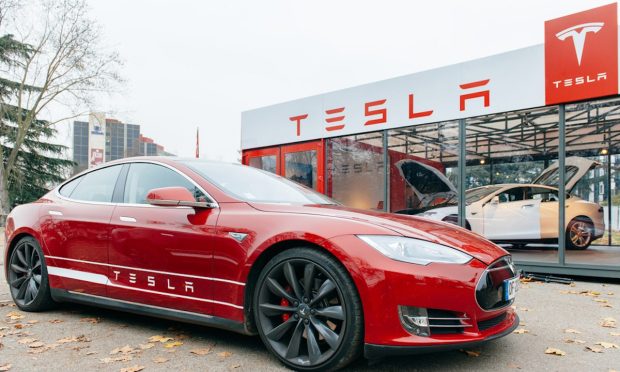Tesla Starts Rollout of Auto Insurance Based on Driving Practices

Tesla owners will be able to opt-in to a new program in which the automaker remotely monitors their driving practices and shares the data to determine the driver’s auto insurance premium.
In announcing the launch of its telematics insurance product on Wednesday (Oct. 20) during its third-quarter earnings call, the company said the product was launched in Texas in early October and will expand to other states as it gains regulatory approvals.
“At Tesla, because our cars are connected, because they are essentially computers on wheels, there are enormous amounts of data that we have available to us to be able to assess the attributes of a driver who’s operating a car and whether those attributes correlate with safety,” Zachary Kirkhorn, chief financial officer of Tesla, told analysts and investors during the company’s call.
Premiums Based on Each Driver’s Safety Score
The auto insurance premium will be based on each driver’s “Safety Score,” a functionality that Tesla rolled out during the third quarter. In order to predict the probability of a collision, the automaker actively monitors braking, turning, tailgating, forward collision warnings and forced autopilot disengagements.
By using each driver’s Safety Score, Tesla says, the insurance premiums can more accurately reflect chances of a collision than any other insurance product on the market. Additionally, Tesla will proactively communicate to the user what driving adjustments need to be made to decrease the probability of a collision.
Kirkhorn noted that traditional auto insurance is based on limited data, including things like marital status, age, accident history and similar factors. He added that customers told Tesla the price of traditional insurance was too high and was reducing the affordability of the cars. As a result, the company developed this new model to predict the probability of a collision over a period of time.
“From that model, being able to predict the frequency of collision, we can then align that against a price curve and we can have individualized pricing integrated into the car, integrated into the app, integrated into that customer’s experience with a feedback loop back to the customer on how they are driving after every drive, the attributes they were successful on or not successful on, and the tips to improve their safety,” Kirkhorn said.
A Refreshed Mobile App
In other news, Tesla also announced during the call the latest developments in its vehicle software: Autopilot and Full Self Driving (FSD).
In vehicle software, the company released a refreshed mobile app during the third quarter that streamlines the user experience, enables phone keys for multiple vehicles simultaneously, allows commands to be sent to the vehicle immediately upon opening the app and integrates the purchase of upgrades, subscriptions and accessories. In addition, Tesla added the Disney+ streaming video service, the Sky Force Reloaded scrolling arcade shooter game, Car Wash Mode and a number of improvements to cold weather performance.
In Autopilot, the company hosted a recruiting event called AI Day to attract the best AI (artificial intelligence) talent. After presenting its end-to-end vision of full autonomy, Tesla reports that it has received an overwhelming number of applications.
A Hardware- and Software-Based Company
In October, the company started to expand its FSD City Streets beta to more drivers, based on demonstrated driver safety and attentiveness measured through their Safety Score.
The products are being added to a growing number of vehicles. Tesla had record vehicle production and deliveries in the third quarter, producing 237,823 vehicles and delivering 241,300. The company noted that it achieved this despite semiconductor shortages, congestion at ports and rolling blackouts that have impacted its ability to keep factories running at full speed.
“As we think … forward, you know, the business up until this point has largely been a hardware automotive business with a little bit of software on top of that,” Kirkhorn said. “As Full Self-Driving matures, as take rates increase, if we are to raise pricing on that, there’s considerable upside both on gross margins and operating margin as that comes to light, as the business becomes more of a mix of a hardware-based company and a software-based company.”
